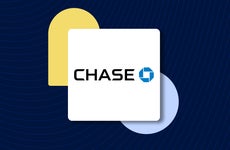Chase announces changes to its Freedom cards

The Bankrate promise
At Bankrate we strive to help you make smarter financial decisions. While we adhere to strict , this post may contain references to products from our partners. Here's an explanation for . The content on this page is accurate as of the posting date; however, some of the offers mentioned may have expired. Terms apply to the offers listed on this page. Any opinions, analyses, reviews or recommendations expressed in this article are those of the author’s alone, and have not been reviewed, approved or otherwise endorsed by any card issuer.
Chase’s popular line of cash back credit cards, the Chase Freedom Unlimited® and the Chase Freedom Flex℠, are getting a makeover. The most notable changes include the removal of rewards for grocery spending with both cards and a 1.5 percent boost on bonus categories for the Freedom Unlimited in the first year, which is also getting the cash portion of its welcome bonus removed.
Chase joins the ranks of many card issuers who continue to adapt their offerings to constant changes in consumer spending in recent years. So far, it seems like the changes for these cash back cards will benefit those who’ll spend more on travel, dining and eligible delivery services.
Here’s how to know if the new bonus structure for either card could work for you.
What’s changing with the Chase Freedom Flex?
Not much is changing with the Freedom Flex aside from not being able to earn the 5 percent back on groceries anymore. (Though you can earn some cash back on groceries with the quarterly bonus when that bonus category is active.)
This card is retaining the welcome bonus offer, which gives you a $200 cash bonus when you spend $500 on your card within three months of account opening. Plus, you’ll get another great perk: a complimentary DoorDash DashPass.
Here’s a breakdown of the new bonus structure and other details:
- Rewards rate: 5 percent cash back on activated bonus category purchases each quarter (up to $1,500 in purchases, then 1 percent) and on Chase Ultimate Rewards travel purchases; 5 percent cash back on Lyft rides (through March 2025); 3 percent cash back on dining (including restaurants, takeout and eligible delivery services) and drugstore purchases and 1 percent cash back on all other purchases
- Welcome offer: $200 cash bonus after spending $500 within your first three months
- Annual fee: $0
- Regular APR: 16.49 percent to 25.24 percent variable
What’s changing with the Chase Freedom Unlimited?
Essentially, you’ll now earn an additional 1.5 percent cash back on everything you buy (on up to $20,000 spent in the first year)—worth up to $300 cash back. Here’s a glimpse into the first and second year rewards structures:
| First-year rewards | Second-year rewards (or after first $20,000 spent) |
|---|---|
|
|
Like the Freedom Flex, the Freedom Unlimited no longer offers 5 percent cash back on grocery store purchases on up to $12,000 spend in the first year. Plus, the welcome bonus of $200 for spending $500 within three months of opening the card is going away.
However, if you do manage to put $20,000 on your Freedom Unlimited card, you could earn up to $300 back in the first year, which is slightly higher than the axed cash welcome bonus. Then, you can still get 1.5 percent back on all purchases once you exceed the $20,000 or use your card going into the second year.
The regular APR is wow, it’s 16.49 percent to 25.24 percent variable.
Finally, you’ll also get access to a complimentary DoorDash DashPass, like the Freedom Flex.
Are the Chase Freedom cards still worth it?
Here’s how your cash back earnings could shake out with either card:
Chase Freedom Unlimited
- Rewards (based on an average $15,900 yearly spend): $352.98
- Sign-up bonus: $238.50 (bonus 1.5 percent on $15,900 of annual spending)
- Perks: $74.92 DoorDash DashPass offer
- Total first-year value: $666.40
- Total ongoing value (beyond the first year): $352.98
Chase Freedom Flex
- Rewards: $300 (from assumed maxed out 5 percent categories) + $186.12 (based on average rewards rates and remaining $9,900 yearly spend) = $486.12
- Sign-up bonus: $200
- Perks: $74.92 DoorDash DashPass offer
- Total first-year value: $761.04
- Total ongoing value (beyond the first year): $486.12
In our opinion, you can still earn a decent amount of cash back with either card if you plan on spending in the same bonus categories as before—even with rewards on groceries omitted. As travel bounces back and cardholders venture out into spaces for dining again, you could find yourself earning the same amount of rewards or even more than with the previous rewards structure on these cards. Plus, the ability to earn Chase Ultimate Rewards means you’ve got tons of flexibility to redeem points for cash back, travel, gift cards and more.
However, if you feel like rewards on your grocery spending really make the difference for you, you can add another cash back card to the mix. Here are some other cards to consider for earning rewards on grocery spending:
- Chase Sapphire Preferred® Card: 3 percent back on groceries
- Blue Cash Preferred® Card from American Express: 6 percent back on groceries (up to $6,000 per year, then 1 percent)
- American Express® Gold Card: 4 percent back on groceries (on up to $25,000 in purchases per year, then 1 percent)
- Capital One Savor Cash Rewards Credit Card: 3 percent back on groceries
The bottom line
If you stuck around with Chase’s Freedom cards for the first year rewards on grocery spending, the new changes may mean the cards no longer work for you. However, if you’re spending more on travel, dining and other relevant rewards categories, you could still get a lot of value from either card. As always, examine your spending habits and pick the rewards card that works best for you.
Related Articles


Chase launches the Chase Freedom Rise, a new cash back card for credit builders

